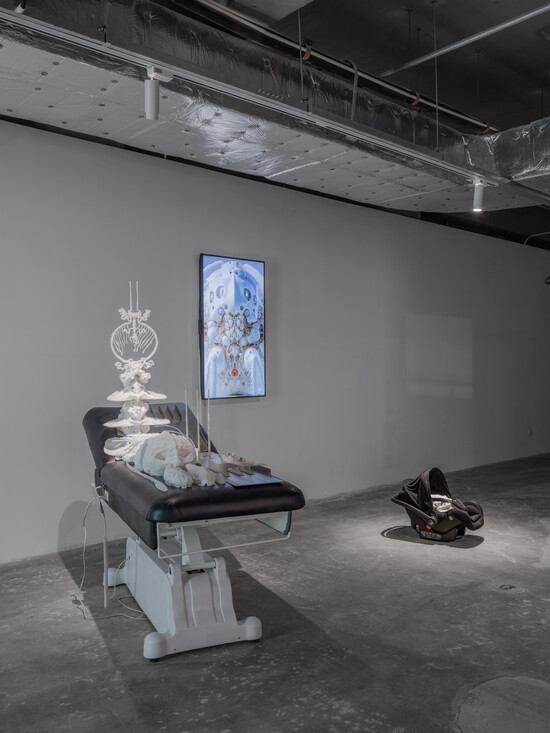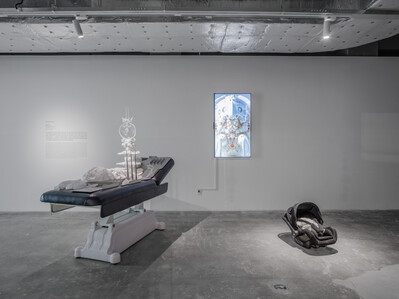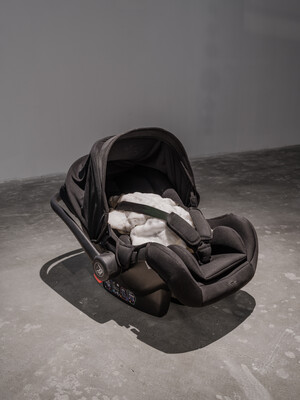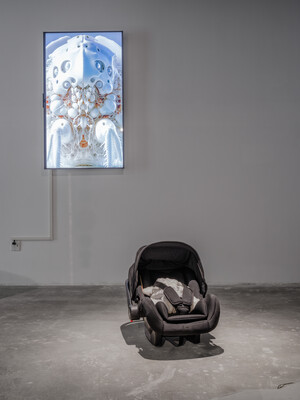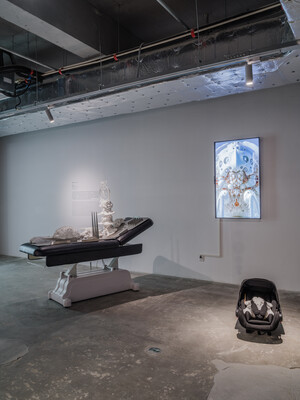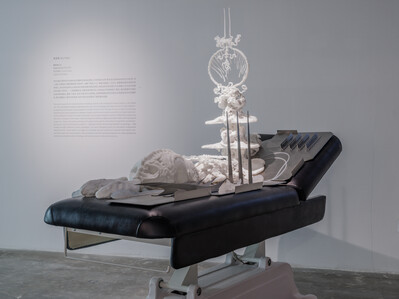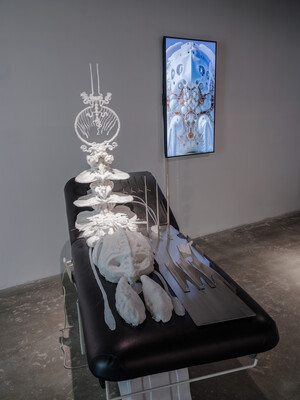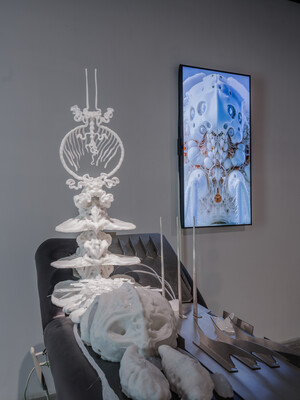The artist explores the contemporary convergence of body and artificial intelligence, questioning our understanding of the boundaries between reality and illusion, organic and artificial. Digital-biological hybrid systems challenge the determinism of representational systems and propose new paradigms for body reconstruction through the lens of data microbiology. The body is decoded, with each particle digitized, extracted, decomposed, and reassembled in the digital realm, forming a 'regenerative body' that is neither fully organic nor purely artificial. This reshaping process itself questions embodied existence—does the continuity of biological to digital evolution and the binary structure of steel and resin materials symbolize the dialectical relationship between carbon-based and silicon-based forms of existence?
In the installation, digital microbial information uses Complex Adaptive Systems (CAS) theory to process the artist's biological information, transforming wet media into digital microbial bodies with topological properties. These digital microorganisms are not simple visual metaphors but functioning information entities that self-organize in virtual constructed space to form a third kind of existence—topological three-dimensional skeletal morphology—that is neither completely controlled by algorithms nor entirely dependent on biological input, but emerges from the interaction between the two.
The work ultimately points to an information materialism beyond dualism, where data is no longer an intangible abstract entity but a material-information complex with quasi-life characteristics, thus providing a new theoretical perspective for understanding the relationship between body, technology, and consciousness in the posthuman era.
Detail pictures:

